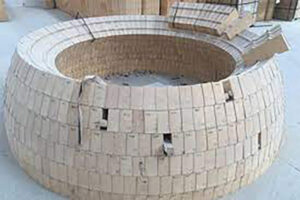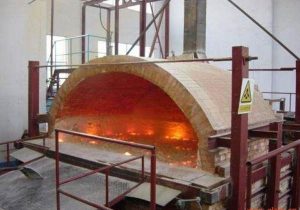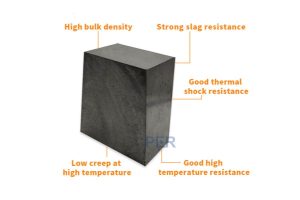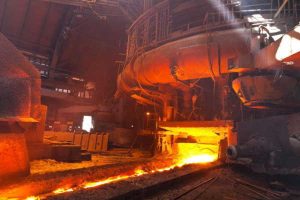01. Preface Overview
With the rapid development of the furnace industry, the bottom of the kiln in some glass factories often leaks in recent years, after the relevant analysis of professionals:
The main reason for the leakage is that the bottom structure of the pool does not effectively prevent the erosion of the glass liquid upward drilling and metal particles downward drilling.
Therefore, the bottom of the pool structure is required to have the performance of preventing the glass liquid from drilling upward and the metal particles from drilling downward.
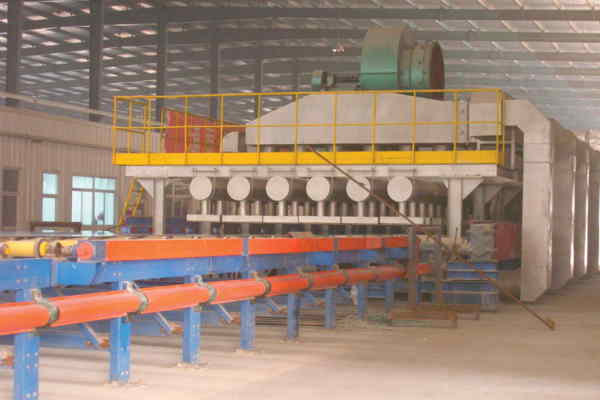
02. Working principle
Both types of erosion, upward drilling of glass liquor from underneath the refractory brick and downward drilling of metal particles, are caused by the convection of free interfacial layers occurring at the interface of the three materials.
In the usual case, the three substances are refractory brick – glass liquid – air bubbles or refractory brick – glass liquid – metal.
Convection at the interface layer results in increased material interchange and erosion of the refractory at the interface of the three substances. The more aggressive erosion of the refractory brick located at the glass liquid surface line is the result of this situation.
Air bubbles are generated when the glass liquid flows beneath the pavers at the bottom of the electrofusion cast pool. Or when the glass liquid reacts with the refractory beneath the pavers through the vertical joints of the pool pavers. These bubbles rapidly erode upward through the electrofused zirconium corundum above.
The tendency of the refractory bricks below the pool floor pavers to generate bubbles is important. If the tendency of the refractory firebricks to generate bubbles is high, the amount of upward erosion is also high.
The initial point of erosion caused by bubbles is in the horizontal joints between the layers, or the horizontal joints between the pavers and the sealing layer if the pavers are a single layer. The erosion in the vertical joints is somewhat less than in the horizontal joints.
However, since the glass liquid flows into the horizontal joints through the vertical joints. Therefore, the bottom of the pool paving tiles, joints, and sealing layer should be combined into an airtight inseparable whole of the three parts. This can effectively prevent the glass liquid from flowing into the horizontal joints.
03. Solution
The use of three kinds of electrofusion AZS pounding material with the pavement brick crystal phase is the same as the pavement brick below the sealing layer and embedded between the pavement brick seam, so that electrofusion brick, seam, and sealing layer in 1250 ℃ sintered into a complete resistance to glass liquid erosion of the composite layer as a whole.
(1) The use of electrofusion AZS pounding material resistance to glass liquid erosion of the composite layer of the overall high-temperature role.
(2) 800 ℃ below, AZS pounding material expansion according to the coefficient of less than the expansion coefficient of AZS electrofusion material has a regular increase, the load is zero and the load is 2 or 4kg/cm2 no difference. Over 800 ℃ to 1100 ℃, AZS bricks for glass kilns through the glass phase of the electrofusion particles shows a sintering phenomenon. The glass phase keeps increasing up to 1200°C as the maximum.
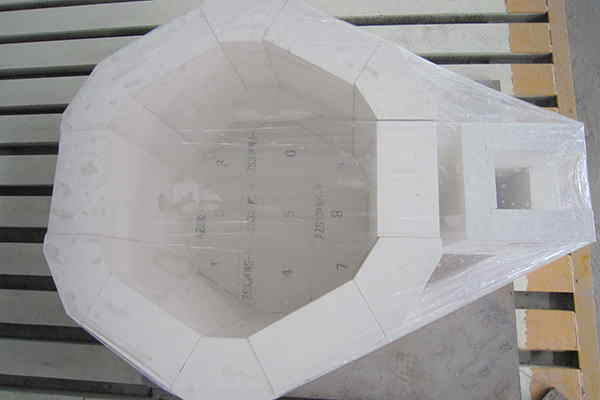
A double result is produced
The plasticity of the AZS pounded material is most appreciable in this temperature region.
The 33# electrofused zirconium corundum contains about 20% glass phase, which is similar to the AZS pounded material, so the two can adhere well to each other.
(3) Above 1200℃ AZS pounded material loses permeability and the glass phase is transformed into mullite, which means that the AZS pounded material is vitrified and plasticity becomes weak, which has many benefits.
①AZS pounding material raw material expansion is much smaller than the pool bottom paving tile material. Secondly, this swelling is only limited to below 800℃, beyond this temperature, AZS pounding material becomes strain material.
②The plasticity and adhesion of AZS pounding material between 800 and 1300℃ is beneficial to keep the joints airtight in some cases with slight displacements, such as when turning back the material to be loaded.
In practice, once the temperature reaches a steady state, the three AZS-pounded materials begin to undergo ceramic body changes and gradually fuse into one. In this way, the entire pool bottom material is combined into a dense and indivisible whole.
The glass phase adhesion layer between the pounded material and the pool tiles is a reliable intermediate layer. This chemical and mineral structure ensures a homogeneous and solid structure of the entire pool floor.
04. Notes
Use pounding material with different crystalline phases from the pavement tiles and high content of Fe2O3 and other impurities. Because it can not be sintered into a composite layer with the pavement brick at a high temperature as a whole and a high foaming rate, its resistance to glass liquid upward drilling erosion performance is poor. The pounding material in a glass factory in Zhejiang and a glass factory in Anhui Province the glass kiln used for less than a year, and the bottom of the pool leakage and forced to stop the kiln.
Usually, the metal is mixed with raw materials and broken glass in the kiln. In special cases, the metal may also fall to the bottom of the pool when using metal tools for thermal repair of the upper structure of the kiln and the large swan.
Therefore, the key to preventing the erosion of metal particles down the borehole is the use of powerful magnets to remove metal impurities mixed in with the mating and broken glass.
At the same time, zircon bricks are added under the sealing layer at the bottom of the AZS pool, which can react with the glass to form a sticky substance to reach into the open brick joints and wrap the metal, preventing the glass liquid from penetrating the lower part and the metal from drilling down.
About PER Refractory Company
PER refractory company is a top manufacturer of refractory bricks and refractory castables, serving a wide range of industries including steel, cement, glass, and petrochemicals.
With years of experience in the industry, we are committed to providing high-quality products and exceptional customer service to our clients.
Our product range includes a variety of refractory bricks, such as fireclay bricks, high alumina bricks, silica bricks, and magnesia bricks.
We also produce a range of refractory castables, which are a mixture of refractory aggregates, binders, and additives that can be used for a variety of applications.
Our castables include low cement castables, self-flow castables, and high-strength castables.
At PER company, we are committed to sustainability and minimizing our impact on the environment. We use eco-friendly materials and production processes whenever possible, and we are constantly exploring new ways to reduce waste and energy consumption.
We pride ourselves on our commitment to customer satisfaction, and we strive to exceed our clients’ expectations in every aspect of our business. With a focus on quality, innovation, and sustainability, we are dedicated to being the preferred supplier of refractory bricks and castables in the industry.

